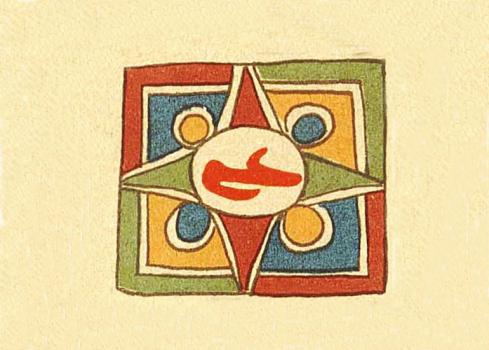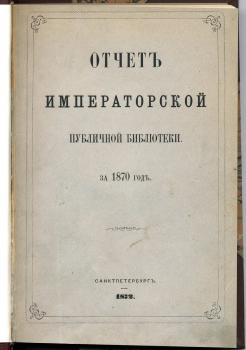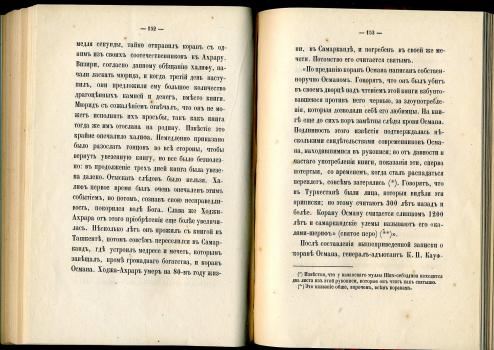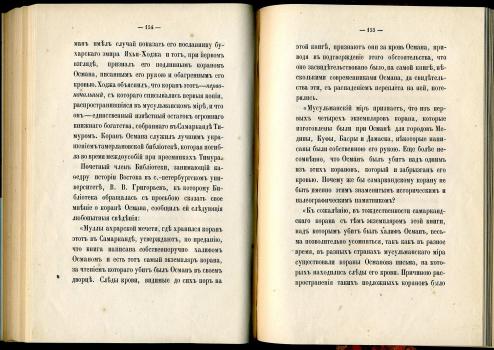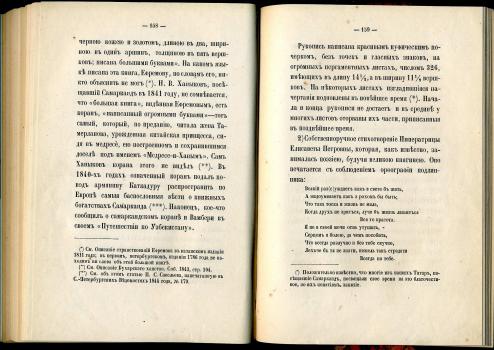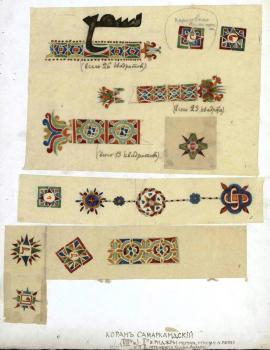Samarkand Quran

O.V. Vasilyeva
Beginning of the Study of the Manuscript
1870 marks a new, well-documented phase in the history of the Samarkand Quran, which lasted until 1917. The printed Report for 1870 informed about its acquisition by the Public Library. A lengthy description reads that the holy book is written in “beautiful Kufic script, without dots and vowel signs/marks, on huge parchment leaves, numbering 326, having a length of 14 ½, a width of 11 ½ vershokov [64×51 cm]. On some leaves, faded writings have been recovered in modern times. The beginning and end of the manuscript are missing, and in the middle of the book, parts inscribed at a later time are torn off from many leaves." The description contains a significant mistake: the book consists of not 326, but 353 leaves, of which 69 are paper, inserted in to replace the lost ones.
The Report contains a cover letter from the orientalist Alexander Ludwigovich Kuhn, which describes the biography of Khwaja Ahrar and the legend about the origin of the Quran, known from the words of Mullah Abd al-Jalil and Mullah Mushni-mufti, who are served at the madrasa and the tomb of the saint. Kuhn also writes that the stains of the blood of the Caliph Uthman are left on certain pages. After receiving this massage from Kuhn, Kaufmann showed the book to the envoy of the Emir of Bukhara, Yahya-Khoja, who said that the Quran had belonged to Timur's library.
Next goes the opinion of the orientalist Professor V. V. Grigoriev that “the identity of the Samarkand Quran with the copy of the book over which Caliph Uthman was murdered can be doubted, since at different times, in different countries of the Muslim world, there were Qurans Qurans written by Uthman, with traces of his blood on them. And yet Grigoriev further writes, "The Quran can be attributed to the 1st century AH "(622 – 719 CE).
Strangely enough, neither Grigoriev nor his followers apparently knew that since 1864, the Public Library housed a whole collection of early Qurans acquired from the heirs of the French orientalist Jean Joseph Marcel, a member of Napoleon's expedition to Egypt. The Marcel Collection includes 130 large and small parchment fragments, with a total of two thousand leaves. Among them are fragments of the early Arabic Hijazi script (Марс. 19) and leaves in Umayyad writing (until the middle of the 8th cent.; Марс. 13), but the majority are fragments of Qurans made in the Abbasid period (mid-8th - 13th centuries) in scripts which are divided into several types and subtypes. But even if Grigoriev compared the writing of the Samarkand Quran with the various handwritings of the Qurans from the Marcel collection or with samples from the collection of Pyotr Dubrovsky (Дорн 6), he would find no direct equivalents among them. And even if such equivalents were found, it would hardly help in dating the Samarkand manuscript without a special paleographic study.
Meanwhile, the Samarkand Quran and its ornament is dated back to the 2nd century AH (8th cent.) by Vladimir Stasov, a well-known art critic and art historian who worked for the Public Library for many years. In 1873, he prepared and, in 1876, published a monumental album Slavic and Oriental Ornament Based on Manuscripts of Ancient and Modern Times. Stasov included decorative elements of Qurans from foreign repositories and also samples of writing, verse markers, and headpieces indicating chapters of the Samarkand Quran. Thus, Stasov was the first to pay attention to the decoration of this outstanding manuscript. (His archive in the Manuscripts Department of the National Library of Russia contains coloured copies on tracing paper, made from the decorative elements and published in the album.) We have to admit that Stasov's album very quickly dropped out of sight of book historians and remained unknown to subsequent generations. However, without a doubt, he was known to A. F. Shebunin.
